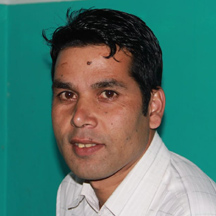Koshi Province
Livestock farmers in Taplejung highlands start winter descent to protect herds from cold
The farmers also aim to profit from selling sheep and goats, which are in high demand for Dashain feasts.
Ananda Gautam
Ngima Sherpa, a livestock farmer from Lelep in ward 6 of Phaktanglung Rural Municipality of Taplejung, has arrived at Phale, also in Phaktanglung, along with his 77 yaks, after spending more than six months in Siddhi, which is around 4,000 metres above sea level.
Around February, sheep and yak farmers go to high altitudes, make sheds and stay there for five to six months, and they come down with the onset of winter each year. However, the livestock farmers rush to climb down to the human settlements due to two major Hindu festivals–Dashain and Tihar. Sheep and goats are in high demand for Dashain feasts.
“We get good prices for our sheep, mountain goats and yaks during the festival season. So we are descending now to sell our animals,” said Sherpa.
Phaktanglung Rural Municipality is a remote local unit that is both mountainous and hilly. This local unit is the third-largest rural municipality in the country and the biggest in the district. Phaktanglung covers 51 percent of the area of the district.
During the summer, it becomes very difficult for the animals to stay in low-altitude areas. In order to balance the temperature of the cattle and keep them fit, the farmer travels up and down.
Gopal Bista, another cattle farmer from Phawakhola in ward 11 of Phungling Municipality, has also left Siddhi along with his 400 sheep. Bista has reached Gyabla in Phaktanglung-6, travelling through Ghunsa and Phale to reach Amjilesa in Phaktanglung.
Bista said that he stays in Amjilesa until mid-November, sells his sheep in the market, and later returns home. Like him, all the cattle herders who went to high altitudes are coming down and selling their cattle in the market for the festival season.
“The demand for cattle increases significantly in the market during Dashain and Tihar,” said Bista.
According to Bista, based on the weather, the schedule of moving the cattle differs by 15 to 20 days every year. The farmers join forces with one another for better protection and observation, and usually stay in the highlands for at least five months.
“The farmers also collect the manure of the cattle for fertilising the fields before sowing maize. Sheep and yaks cannot be kept and raised at home; they must graze all day while on the move. All the farmers here are raising them because they are needed for festivals, family functions, and weddings, among other things,” said Sherpa.
The cattle farmers of Phaktanglung, Sirijangha, Sidingba, and Mikwakhola rural municipalities and Phungling Municipality of the district are the farmers who move with the cattle to graze and keep them fit. They go to the highlands up to 5,500 metres, and the farmers have their own spots where they stay every season in coordination with other farmers.
Farmers from the eastern part of the district usually go to the eastern base camp of Mt Kanchenjunga, and those from the northern part up to the northern Khambachhen base camp of Kanchenjunga for grazing.
“Except for the threat of wild animals, there are no other problems rearing livestock in the highlands. Almost every farmer deals with damage and attacks on their livestocks from wild dogs and leopards in the highlands every year,” said Ngima Sherpa. The farmers move along with all the essential things, necessary equipment, and consumables to spend their time in the highlands.
According to the data from the Veterinary Hospital and Livestock Service Expert Centre in Taplejung, there are currently around 15,000 to 17,000 sheep in the district. The number of yaks is also more than 3,000 in the district. Data also show that the number of yaks and sheep in the district is decreasing; the number of these cattle was three times higher a decade ago.




 18.12°C Kathmandu
18.12°C Kathmandu












